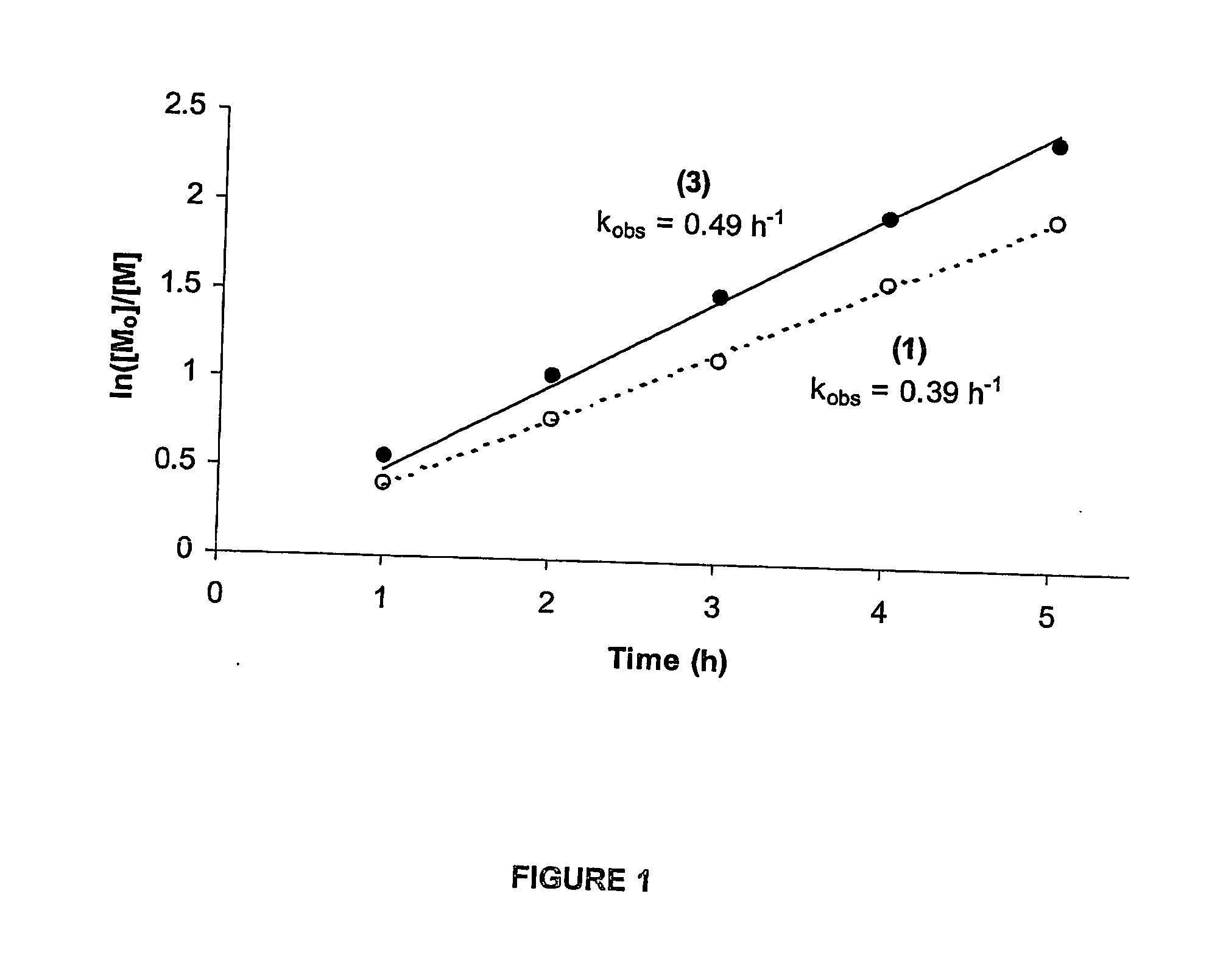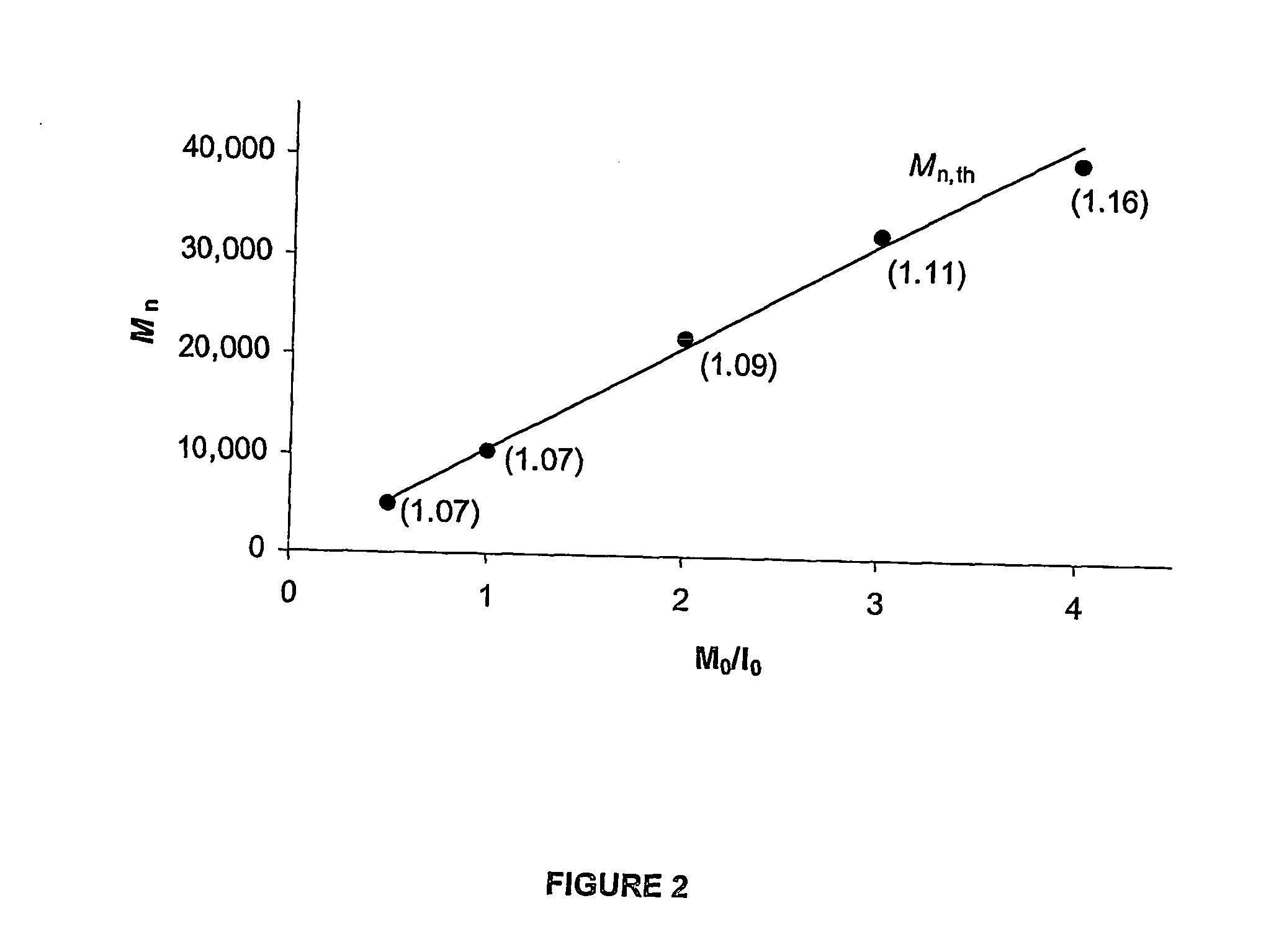Transition metal complexes, especially iron complexes, used as a catalyst component in the polymerisation of olefins
a technology of transition metal complexes and catalyst components, which is applied in the direction of iron group organic compounds without c-metal linkages, organic chemistry, iron organic compounds, etc., can solve the problems of heterogeneous system, difficult to determine the level of active catalyst in the polymerisation system, and difficult to predict or control the properties
- Summary
- Abstract
- Description
- Claims
- Application Information
AI Technical Summary
Benefits of technology
Problems solved by technology
Method used
Image
Examples
examples
Synthesis of Tridentate NNOFeCl and NNOFeCl2 complexes
NNOFeCl
[0084] The complexes 1-3 were readily prepared according to Scheme 1. The ligands (I-III) were dissolved in tetrahydrofuran and then added dropwise to an excess of NaH in tetrahydrofuran at 0° C. The suspension was stirred overnight at room temperature and then filtered. The filtrate was then added dropwise to stirred suspension of FeCl2 in tetrahydrofuran and stirred for a further 16 hours. The solution was pumped to dryness followed by extraction into pentane and removal of solvent to afford 1-3 as microcrystalline, dark, paramagnetic solids in good yields.
Characterisation
[0085] 1:IR NaCl) 2952m, 2770m, 1612s, 1459m, 1436w, 1413w, 1361w, 1320w, 1272w, 1255w, 1169w, 1025w, 878w, 839w. Anal. Calc. For FeClC19H31N2O: C, 57.81; H, 7.92; N, 7.10; Cl, 8.98. Found: C, 57.80; H, 7.70; N, 6.87; Cl, 8.23%. MS (—CI / NH4) (m / z): [LFeCl]−=394. μeff=3.64 BM.
[0086] 2 IR (NaCl) 2964w, 2881w, 2362w, 1614s, 1535m, 1483m, 1430m, 13...
PUM
| Property | Measurement | Unit |
|---|---|---|
| Temperature | aaaaa | aaaaa |
| Temperature | aaaaa | aaaaa |
| Ratio | aaaaa | aaaaa |
Abstract
Description
Claims
Application Information
 Login to View More
Login to View More - R&D
- Intellectual Property
- Life Sciences
- Materials
- Tech Scout
- Unparalleled Data Quality
- Higher Quality Content
- 60% Fewer Hallucinations
Browse by: Latest US Patents, China's latest patents, Technical Efficacy Thesaurus, Application Domain, Technology Topic, Popular Technical Reports.
© 2025 PatSnap. All rights reserved.Legal|Privacy policy|Modern Slavery Act Transparency Statement|Sitemap|About US| Contact US: help@patsnap.com



